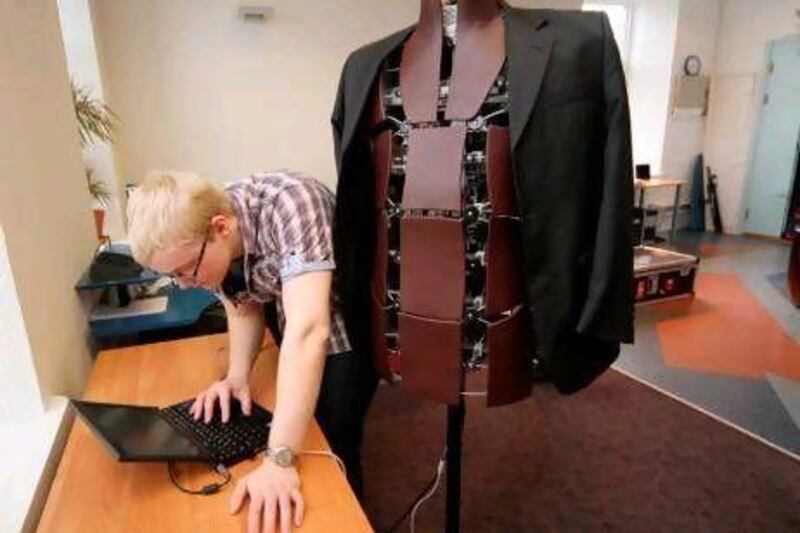Fashion fans have one more reason to swap brick-and-mortar shops for online retailers: a company in tech-savvy Estonia has come up with a way to let you try on new clothes via your own computer.
The Fits.me company aims to end the guessing game about size and spare online shops heaps of returned goods, thanks to shape-shifting robotic mannequins that can grow from slim to muscular in moments, combined with a technology invented by Estonian universities.
"When I wanted to buy clothes online a few years ago, it took time to figure out at Timberland my size is S, at Lacoste and Levis it's M, but at Abercrombie and Fitch I am XXL," says Heikki Haldre, its co-founder.
"Our robots and the Virtual Fitting Room technology have solved the main problem that online clothing retailers face - the lack of a fitting room," adds the 36-year-old.
The technology created by two Estonian universities allows online shoppers to enter their body measurements to instantly see how snug an S size would be for them, or how loosely an XXL shirt would fit them.
What makes this possible is the data from Fits.me, which tests garments on the variable robotic mannequins to map how a particular brand's clothes would look on people of different dimensions.
The robots can take on about 100,000 different body shapes, though only about 2,000 are being used for commercial purposes.
The technology has already attracted the world's largest online fashion retailer Otto, the men's luxury brand Ermenegildo Zegna and the US retailer Park & Bond, among others.
Fits.me says its surveys have shown that retailers using the technology had registered an average 57 per cent increase in sales and a 35 per cent drop in volumes of returned goods.
"Customers are responding well to the tool and it seems to be helping convert new customers," says Nadine Sharara, the head of e-commerce at the British retailer Thomas Pink, which has been using the technology since autumn last year.
Fits.me comes from the small but technologically advanced Estonia, which has been driving the e-revolution for years with inventions such as Skype. The company is made up of 32 humans and 14 robots, as Haldre puts it.
Fashion retail was undergoing a major change, he says. Research suggested that one in four clothes shops on the high street could face closure in fewer than eight years as sales moved online.
"While in 2000 only two per cent of clothes were bought online in developed countries, the share is now 10-13 per cent and it is expected to increase to 35 per cent by 2020," he says, citing international surveys.
"In 2012, about one in eight garments are sold via the internet. Customers will return one in four, mainly because the size they received did not fit," says Haldre.
That rate of return is a headache for both retailers and brands: since fashion is seasonal, returned garments cannot be sold at full value - and large numbers of unhappy customers are bad for business.
A survey commissioned by Fits.me showed that 74 per cent of online clothes shoppers with a negative experience were less likely to buy from the shop again, with a third unlikely to buy from the same brand's shops on the high street.
Fits.me launched the technology early last year and industry watchers were quick to catch on. Vogue magazine picked the company as one of the 100 most influential names in the digital fashion world in its 2012 Online Fashion 100 power list.
"Fits.me is an excellent example of a groundbreaking business model, using the internet and the best in service delivery to deliver to people swiftly the clothes that they want," David Lidington, Britain's minister for Europe, said during his recent trip to Tallinn.
But Haldre knows his company still has a long way to go, as thousands of online retailers are still struggling with unhappy customers returning their garments.
"On average, it takes six to eight weeks to launch the technology at an online retailer, so we'll have to work hard to introduce the Estonian robots to thousands, or even just hundreds, of retailers," he says.





